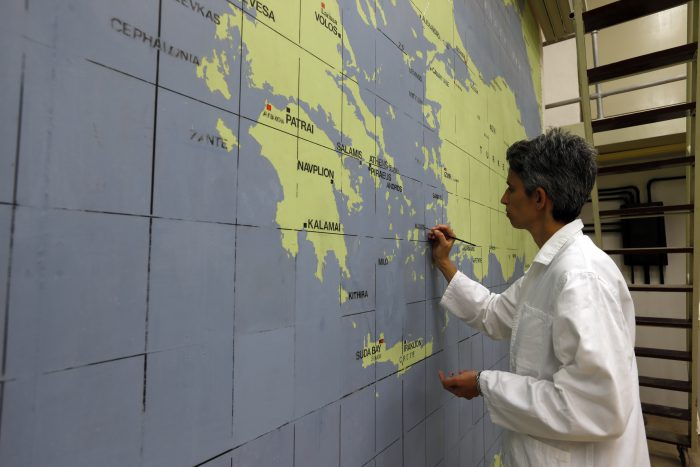Re-living historical moments through restoration
The Malta Airport Foundation contributed nearly €340,000 to the restoration of the Combined Operations Room and ancillary rooms within the Underground War Headquarters in Valletta back in 2017. The most immediately striking feature of the room is a 20-metre-wide map, which was used by NATO to plot Russian submarine movements in the Mediterranean. Years of neglect and humidity had taken its toll on this map, which was recently restored to its original look by restorer and conservator Francesca Muscat. Here, she speaks about the restoration process of this artefact, and the challenges met along the way.

CAN YOU TAKE US THROUGH THE RESTORATION PROCESS?
Prior to a restoration process, it is necessary to inspect the location of the artefact to determine whether it is a safe exhibition space. When I was called in to the COR, works on the cleaning and rehabilitation of the space, including the treatment of walls, were already underway. At the time, the panels making up the map were covered in dirt, dust and grime, making it difficult to understand the full extent of the damage. Tests were carried out to determine which cleaning agents could be used, and since it resulted that the paint layers were sensitive to solvents, a water-based solution was opted for. To remove all vandalism, carried out with markers and pens, a more aggressive method was required. A solvent-based solution had to be applied on the vandalised parts, whilst ensuring that the removal of the original paint layer was kept to a minimum. Whilst each panel was tackled individually, it was borne in mind that these panels would be assembled as a whole. Thus, it was very important that the same result was achieved in each panel for a seamless final appearance. One of the main challenges of the process was treating the artefact for biological growth (mould) that had resulted from the nature of the wood and the surrounding humid environment, and which was close to impossible to eliminate completely.
IS THE PROCESS INVOLVED IN RESTORING A MAP ANY DIFFERENT FROM THE RESTORATION OF, FOR INSTANCE, A PAINTING?
I believe that regardless of the size, age or substrate, artefacts such as these maps should be treated following a similar process applied for any other work of art. In any case, an artefact needs to be treated both structurally and aesthetically.
IN WHAT WAYS DOES THIS RESTORED MAP ADD VALUE TO THE COR, MAKING IT A MORE APPEALING WARTIME MUSEUM TO THE PUBLIC?
The main aim of the intervention was to clean and restore this map to a level that would preserve its age and value. The restored map, which dates to the 1960s, injects the room with historical value as it gives visitors the opportunity to travel back in time. Moreover, the map sheds light on some of the materials available for use at the time, plywood, commercial paints, grid-like tape and transfer letters. Once the room is equipped with the right furniture, lighting and flooring, this map will allow visitors to better visualise and understand the events that unfolded within this room.


